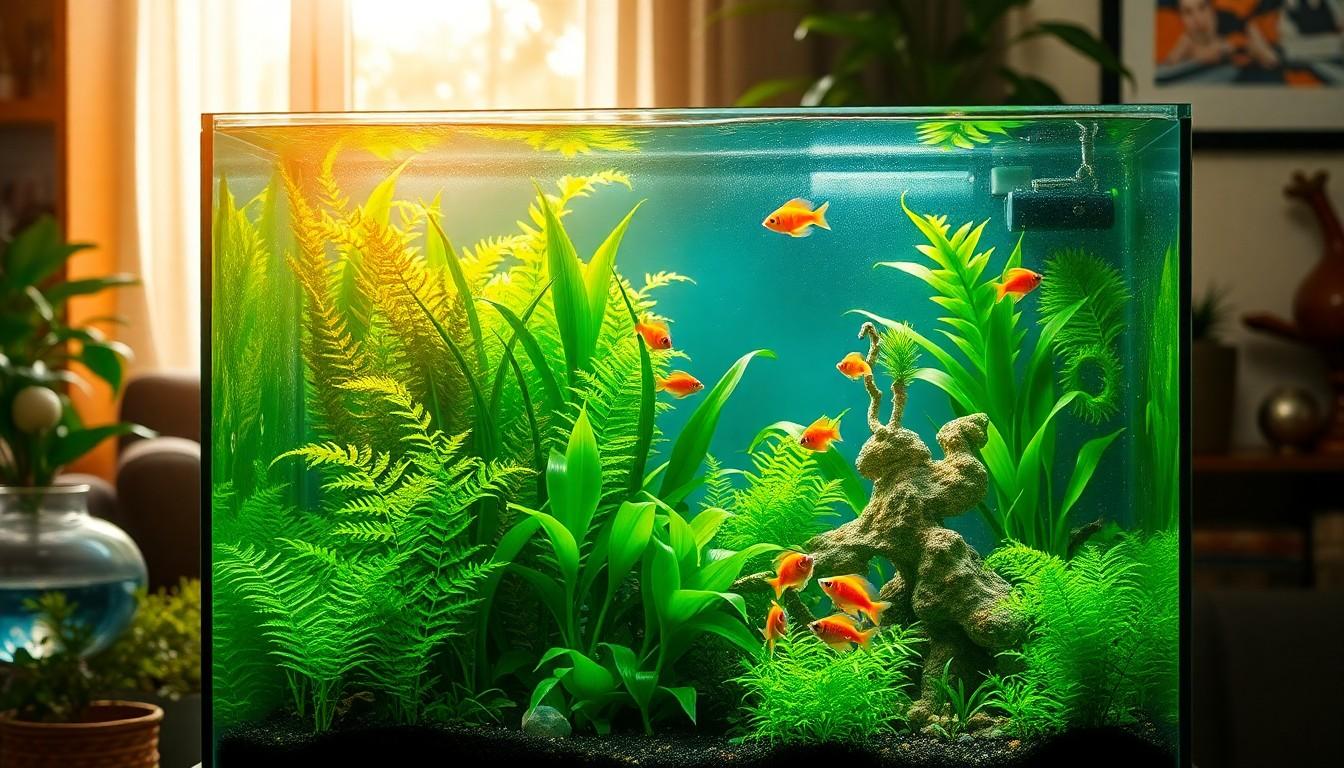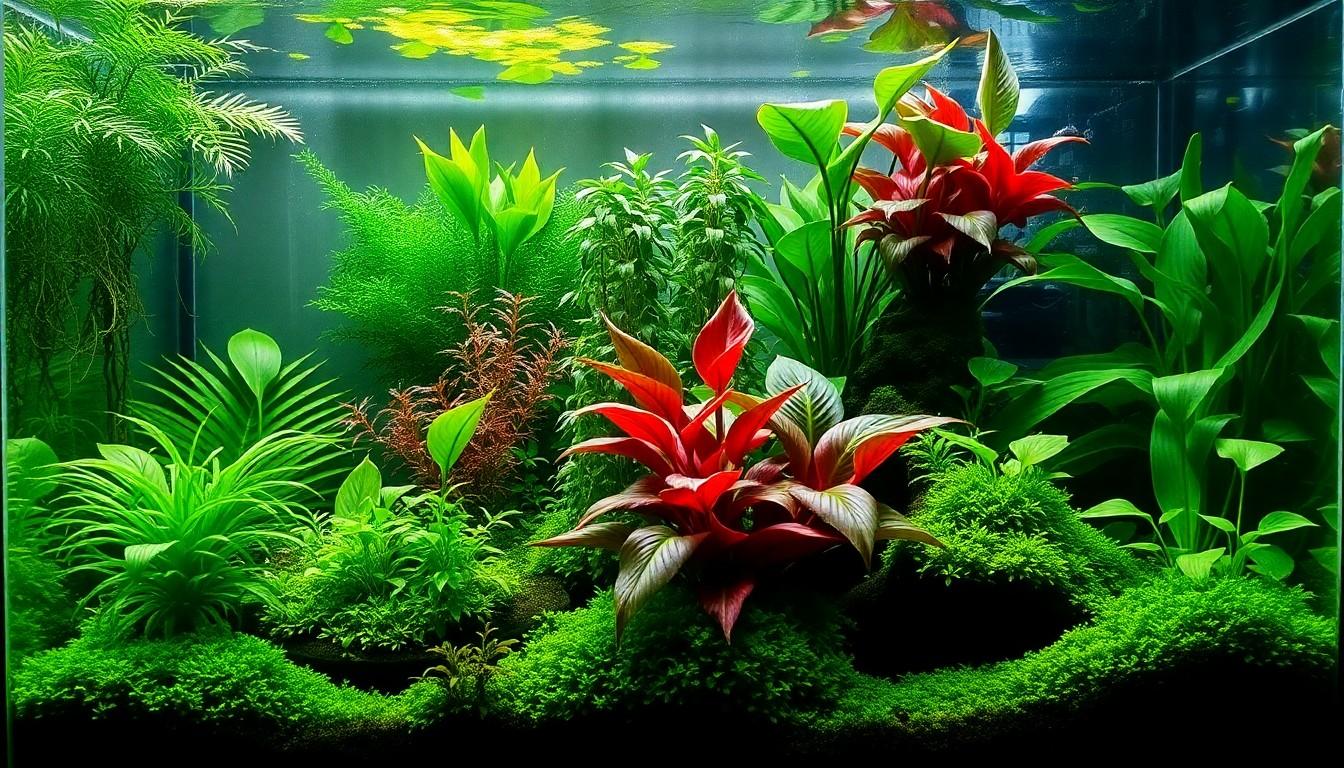The Best Fluffy Pancakes recipe you will fall in love with. Full of tips and tricks to help you make the best pancakes.

Indoor House Plants in Fish Tank: Transform Your Space into a Lush Aquatic Paradise
Imagine turning your living room into an underwater jungle where fish swim freely among lush greenery. Indoor house plants in fish tanks aren’t just a quirky trend; they’re a brilliant way to blend aquatics and botany. It’s like giving your fish a spa day while simultaneously adding a touch of nature’s charm to your home.
These vibrant aquatic gardens not only enhance the aesthetics but also create a healthier environment for your finned friends. The plants filter the water, provide hiding spots, and even help keep algae at bay—talk about a win-win! So, if you’re ready to dive into this unique hobby, grab your snorkel and let’s explore how to create the perfect aquatic oasis that’ll make both your plants and fish feel right at home.
Benefits Of Indoor House Plants In Fish Tank
Combining indoor house plants with fish tanks offers numerous benefits. This practice not only enhances the ecosystem of the aquatic environment but also provides aesthetic appeal.
Improved Water Quality
Indoor plants play a significant role in maintaining water quality. They absorb excess nutrients and toxins, reducing harmful substances in the water. Certain plants, like Anubias and Java Fern, thrive submerged and can assist in oxygenating the water. Increased oxygen levels benefit fish by promoting health and vitality. Additionally, plants help maintain balanced pH levels, creating a more stable habitat for aquatic life. By managing waste, they reduce the need for frequent water changes, allowing for a more sustainable aquarium setup.
Enhanced Aesthetics
Incorporating house plants into fish tanks creates visually stunning displays. Vibrant greens and varying leaf shapes add depth and texture to the aquarium landscape. Plants like Peace Lilies and Pothos not only grow well with the right care but also complement the colors of aquatic life. This harmonious blend enhances the overall appearance of living spaces, providing a calming atmosphere. Furthermore, the unique combination of plants and fish fosters a lively environment, making the aquarium a focal point in any room. Such aesthetics foster tranquility and encourage relaxation.
Choosing The Right Plants

Selecting appropriate plants enhances the look and functionality of an indoor fish tank. Understanding plant types and specific selection considerations ensures a successful aquatic setup.
Best Plant Types For Aquariums
Aquatic plants thrive in fish tanks, contributing to an appealing environment. Java fern, Anubias, and Amazon sword excel in low to moderate light settings. Pothos and peace lily work well when partially submerged, providing a beautiful contrast above the water surface. Mosses like Christmas moss create lush spots that fish enjoy exploring. Each of these plant types enhances water quality while aiding overall ecosystem balance.
Considerations For Plant Selection
Consider light and temperature conditions before choosing plants. Fish tank lighting should align with plant needs, ensuring healthy growth. Additionally, water parameters like pH and hardness influence plant survival. Opt for slow-growing plants to minimize maintenance, as fast growers often require regular trimming. Evaluate fish compatibility too, as some species may nibble on foliage. Lastly, check for pests and diseases on plants to prevent introducing harmful elements to the tank environment.
Maintaining Indoor House Plants In Fish Tank
Maintaining indoor house plants in a fish tank involves understanding their specific needs. Proper care ensures vibrant growth and a thriving aquatic environment.
Light Requirements
Light plays a crucial role in plant health. Most indoor house plants require moderate light for optimal growth. Placing the fish tank near a window with indirect sunlight works well. It’s important to avoid direct sunlight, as this can lead to excessive algae growth and overheating. Utilizing LED grow lights helps supplement natural light, promoting healthy plants. A light schedule of 10-12 hours daily mimics natural conditions, supporting photosynthesis without stressing fish. Adjusting the light intensity to match plant types ensures retention of their vibrant colors.
Nutrient Needs
Nutrient needs vary among indoor house plants. Incorporating substrate rich in organic materials enhances nutrient availability for plants. Regularly adding liquid fertilizers can supplement essential elements like nitrogen and potassium, crucial for growth. It’s beneficial to monitor nutrient levels, as excessive fertilizers can harm fish. Using root tabs provides targeted nutrition for root-heavy plants, delivering essential nutrients directly to them. Regular water changes prevent nutrient buildup and maintain water quality. Balancing nutrient intake helps create a thriving ecosystem, benefiting both plants and fish.
Potential Challenges
Integrating indoor house plants into fish tanks presents several challenges that require attention.
Compatibility With Fish
Choosing the right plant species is essential for maintaining harmony in the aquarium. Certain house plants may release substances that are harmful to fish. For instance, some types of Pothos can leach toxins into the water, potentially affecting fish health. It’s crucial to select fish species that coexist peacefully with the chosen plants. Fish that thrive in heavily planted environments, like tetras and gouramis, usually adapt better to such setups. Observing fish behavior after introducing new plants allows owners to spot any stress signals early. This proactive approach ensures a balanced ecosystem where both plants and fish can flourish.
Algae Growth Concerns
Algae growth poses a common issue in aquariums with live plants. Excess light and nutrients can trigger rapid algae proliferation, leading to an unsightly tank. Controlling nutrient levels is vital in preventing algae blooms. Regular water changes can help maintain a balanced nutrient ratio that benefits plants without encouraging algae. Plant selection also plays a role; quicker-growing plants can outcompete algae for available nutrients. Monitoring light exposure, especially from LED grow lights, benefits plant health while suppressing algae growth. Establishing a consistent maintenance routine contributes to a healthier, clearer aquarium environment.
Conclusion
Creating an indoor aquatic garden by combining house plants with fish tanks offers a unique opportunity to enhance both aesthetics and ecosystem health. This innovative approach not only beautifies living spaces but also fosters a thriving environment for fish and plants alike.
By selecting the right species and maintaining proper care, enthusiasts can enjoy the calming presence of vibrant greenery alongside their aquatic friends. Embracing this hobby invites creativity and connection with nature, making every fish tank a personal oasis. With careful planning and attention to detail, anyone can transform their indoor space into a harmonious blend of flora and fauna.
